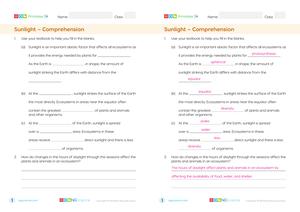Begin the lesson by introducing the concept of ecosystem organization. Discuss the importance of understanding complex relationships within an environment.
Go to the LessonLearning Objectives
- Understand the concept of ecosystem organization and its importance in studying complex relationships within an environment.
- Identify and describe the levels of ecosystem organization: organism, population, and community, using examples from a pond ecosystem.
- Analyze the interactions between populations in an ecosystem and how changes in one population can affect others.
- Explore the role of organisms within a population and the adaptations that help them survive in their ecosystem.
- Examine the effects of population changes on community dynamics, such as pollination by bees affecting flowering plants.
Introduction and Hook
Engage students with a thought-provoking question: 'How do different organisms in a pond ecosystem interact with each other?'
Direct Instruction
Explain the levels of ecosystem organization: organism, population, and community, using examples from a pond ecosystem.
Discuss how changes in one population can affect others, using the midland painted turtle as an example.
Guided Exploration
Watch the video 'Ecosystem Organisation in a Pond' to explore the interconnected levels of individual organisms, populations, and communities.
Facilitate a discussion on the role of organisms within a population and the adaptations that help them survive in their ecosystem.
Hands-On Activity
Conduct a hands-on activity where students classify organisms from a pond ecosystem into organisms, populations, and communities.
Independent Practice
Assign students to research and present on a specific organism within a pond ecosystem, focusing on its role and adaptations.
Check for Understanding
Review and Reflection
Have students reflect on how population changes affect community dynamics, such as pollination by bees affecting flowering plants.
Assessment and Extension
Conclude with the 'Ecosystem Organization' assessment to test comprehension of the lesson's key concepts.
Try the Quiz





